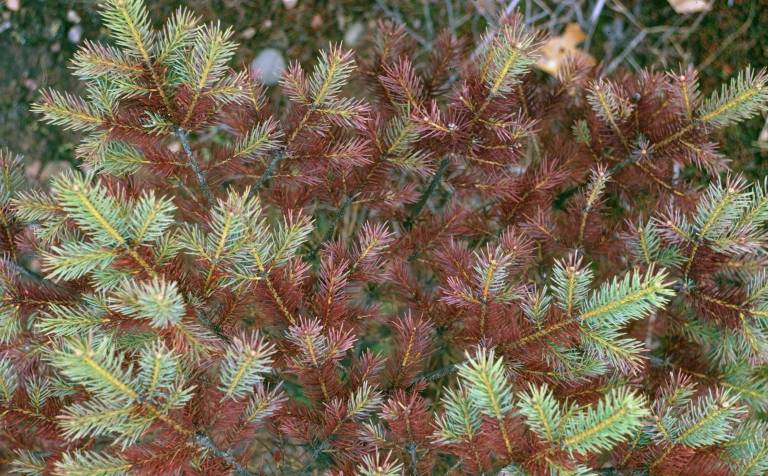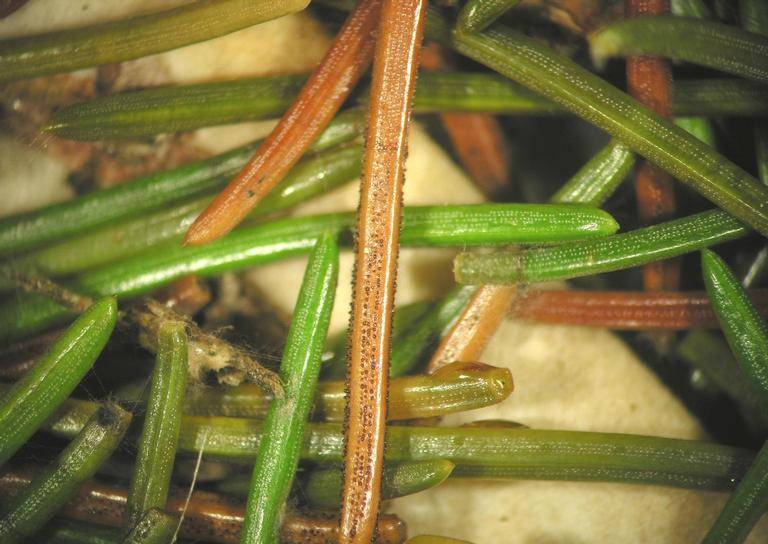Rhizosphaera Needle Cast of Spruce
 Causal Agent
Causal Agent
Rhizosphaera kalkhoffii
Hosts
Spruce (Picea spp.) including Colorado Blue Spruce.
Symptoms

The needles are infected in May-June, but symptoms are not generally apparent until fall. Needles will turn purplish and drop. With a hand lens, it may be possible to see black fruiting bodies protruding through the stomata of the needles. In late spring, spores are released and splashed onto new needles where they can initiate new infections.
Control
 Only plant healthy trees and avoid trees with evidence of infection. Promote health
and vigor of trees by planting in proper sites and minimizing stresses. Trees suffering
from environmental stresses (compacted soils, drought) are more likely to suffer from
Rhizosphaera needle cast. Trees should be watered during periods of drought. Avoid
pruning trees when the foliage is wet because the pathogen can be spread on pruning
tools. Disinfest tools by dipping in 10% bleach solution. Rake up and discard fallen
needles (do not compost). Thinning or spacing trees to increase air circulation may
reduce disease severity. Fungicides may be needed to control the disease. Treatments
should be made in the spring when spruce needles are emerging until half elongated.
Consult your local county extension office for specific recommendations and always
follow label directions.
Only plant healthy trees and avoid trees with evidence of infection. Promote health
and vigor of trees by planting in proper sites and minimizing stresses. Trees suffering
from environmental stresses (compacted soils, drought) are more likely to suffer from
Rhizosphaera needle cast. Trees should be watered during periods of drought. Avoid
pruning trees when the foliage is wet because the pathogen can be spread on pruning
tools. Disinfest tools by dipping in 10% bleach solution. Rake up and discard fallen
needles (do not compost). Thinning or spacing trees to increase air circulation may
reduce disease severity. Fungicides may be needed to control the disease. Treatments
should be made in the spring when spruce needles are emerging until half elongated.
Consult your local county extension office for specific recommendations and always
follow label directions.
